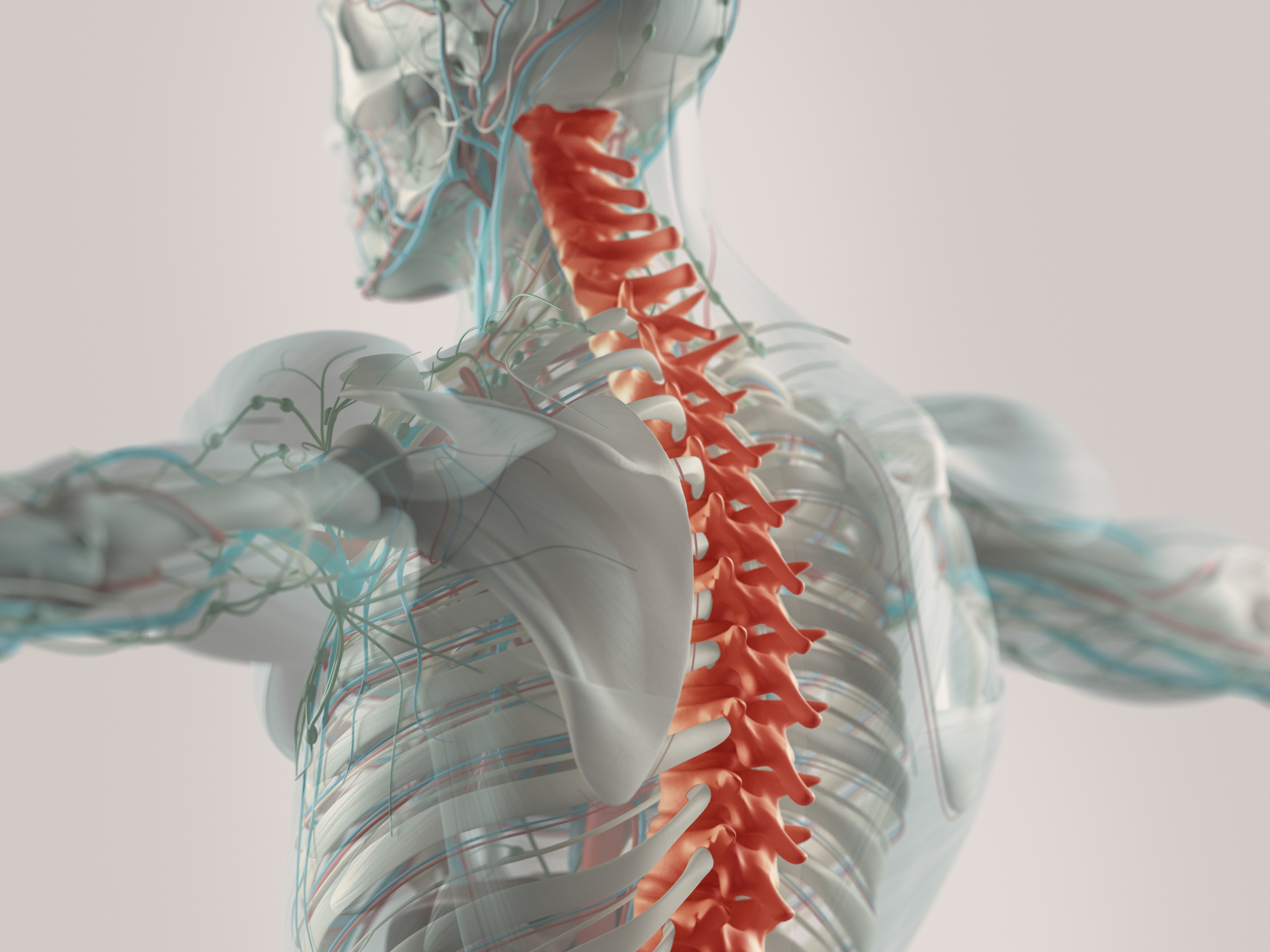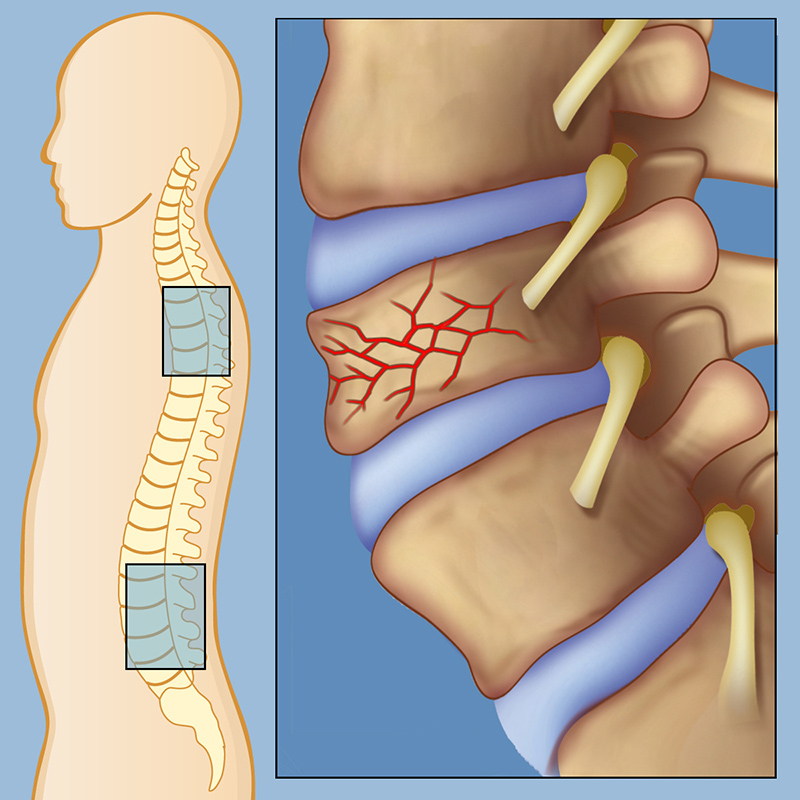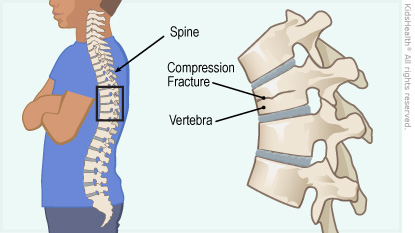
Osteoporosis is by far the most common cause of vertebral compression fractures, especially in women over age 50. As a result, about two-thirds of the vertebral fractures that occur each year are not diagnosed and therefore are not treated. Instead, the patient's pain is often just thought of as general back pain - such as from a muscle strain or other soft-tissue injury - or as a common part of aging.
Less intense pain while lying on one's backīecause the majority of damage is limited to the front of the vertebral column, the fracture is usually stable and rarely associated with any nerve or spinal cord damage.Ī common problem with a vertebral fracture is that it is not recognized or accurately diagnosed. The main clinical symptoms of vertebral fractures typically include one or a combination of the following: Find out more in our fact sheet, ' Daily living after fractures'.Vertebral fractures are usually followed by acute back pain and may lead to chronic pain, deformity (thoracic kyphosis, commonly referred to as a dowager's hump), loss of height, crowding of internal organs, and loss of muscle and aerobic conditioning due to lack of activity and exercise. If you're experiencing these symptoms of spinal fractures, there are things you can do to make daily living easier for you. This can cause shortness of breath and your stomach may feel squashed and bloated, making everyday movements more uncomfortable. This is caused by the broken bones in your spine healing in a squashed or compressed shape. You may notice an outward curve at the top of your spine. If you break multiple bones in your spine, you will probably lose some height. If you're in pain, there are things you can do to help manage your pain and continue living the life you enjoy as far as possible. If you have arthritis in your back, it can be made worse by the change in the shape of your spine. You may experience a spasm when lifting an object or when pushing, pulling, bending or twisting, such as when using a vacuum cleaner.Ī change in the shape of your spine puts strain on the joints and ligaments between your spinal bones. In this case, they continue to 'fire off' pain signals after the bone has healed.Ī change in the shape of your spine can stretch or shorten your back muscles. Pain can also continue if nerves become overly sensitive. If a spinal fracture pinches or irritates a nerve as it heals, pain can continue after healing. This change of shape can cause different types of pain. Ongoing pain, even after the spinal fracture has healed, is caused by the change of shape to your spine. If you still have pain after three months, it’s described as chronic pain. 
But for other people, the pain doesn’t go away completely. Many people recover well from a spinal fracture. You can usually expect your broken bone to heal within about three months. Possible long-term complications Ongoing pain If this happens to you and pain-relieving medications aren't helping, your doctor may consider a medical procedure, to help relieve the pain. Sometimes, a spinal fracture may continue to cause severe pain. When you're ready, try taking a pain-relieving medication to help you stay active. If your pain is severe in the early stages, rest for a while. But spinal fractures can make staying mobile a challenge. Movement does not affect the healing process. It also helps you maintain your muscle strength and reduces your chances of ongoing pain after your spinal fracture has healed.

This can reduce the risk of chest infections, constipation, blood clots and other side effects. It's recommended you aim to stay as active as possible. If you break a bone in your spine, you won’t usually need an operation. This can lead to height loss and a curved spine. It's not the same as a broken back, and it won't cause you to become paralysed.Ī spinal fracture takes between six and 12 weeks to heal.ĭuring the healing process, spinal bones don't return to their normal shape.
#Compression bone fracture how to
How to build up exercise for your bone strengthĪ spinal fracture is when a bone in your spine becomes compressed or squashed after losing strength.

Exercise and physical activity for osteoporosis.







 0 kommentar(er)
0 kommentar(er)
